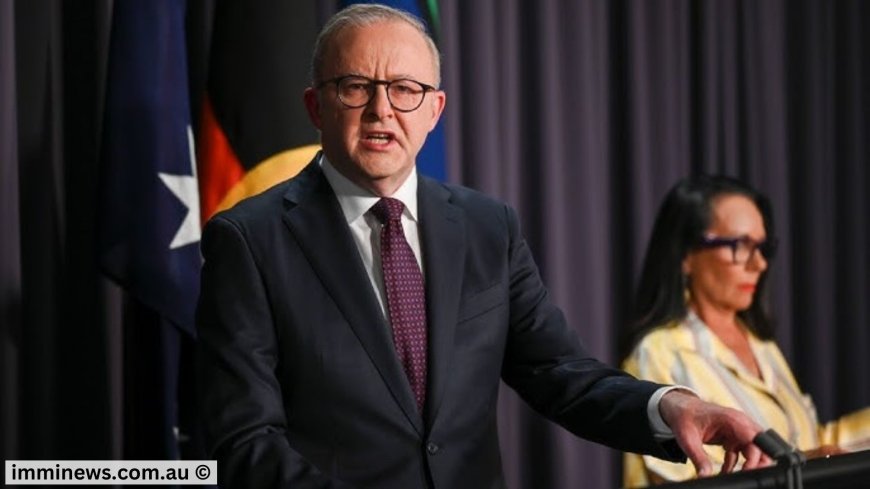Australia’s Immigration Challenges: Government Plan to Streamline Processes
Labor's asylum strategy faces challenges clearing the backlog left by the Coalition. Faster processing shows progress, but rising applications strain the system.

The current government is grappling with the immense challenge of fixing the asylum seeker crisis left behind by its predecessor. With the number of asylum applications rising, the Labor Government’s efforts to get the system back on track are crucial but slow-moving.
A $160 Million Investment to Clear the Backlog
In late 2023, the government committed an additional $160 million over four years to tackle the mounting backlog of asylum claims. This decision came after inheriting a system overwhelmed by a large-scale labor trafficking scam that had persisted since 2016, a crisis exacerbated by the previous government's failure to manage the situation. This underinvestment left the asylum system in disarray, unable to keep up with the surge in claims. The extra funding was intended to expedite the processing of cases at both the initial application stage and the Administrative Appeals Tribunal (AAT), aiming to reduce the number of opportunistic and baseless claims clogging the system.
Early Signs of Progress: Faster Processing but a Long Road Ahead
Almost a year after the funding announcement, we can begin to see the first signs of impact. One key goal was to process asylum applications more efficiently to prevent the application rate from spiraling out of control. After the reopening of international borders, the number of applications surged to around 2,200 per month. Thanks to faster processing that began in early 2024, this rate was held steady, preventing it from surpassing the previous record of over 2,700 per month.
The accelerated processing has slightly reduced the backlog of primary-level asylum claims. The peak of 32,807 pending cases in March 2024 dropped to 31,842 by August. However, the process is slow, with a record 2,726 applications processed in August alone. Whether this processing speed can be sustained remains uncertain, and the challenge is far from over.
High Refusal Rates: Filtering Out Unmeritorious Claims
Despite the faster pace, the government has maintained a high refusal rate at the primary level, with rejection rates between 85 and 90 percent, particularly for applicants from countries like Malaysia, China, India, Vietnam, the Philippines, and other Pacific nations. This strategy is crucial for managing the number of applications, but it has also led to an increase in appeals.
A Surge in Appeals: Another Growing Backlog
The faster processing of asylum claims has led to a steady rise in appeals to the AAT. In the first half of 2023, the AAT was handling between 600 and 800 appeals per month, but this number surged to 1,830 by August 2024. While the additional funding has boosted the number of monthly decisions, reaching as high as 2,446 in May 2024, this figure dropped to around 1,750 by August. Unfortunately, the AAT backlog remains a pressing issue, plateauing at around 41,000—up significantly from 5,000 in 2016.
A Growing Concern: Asylum Seekers Refused but Still in the Country
While faster processing at the AAT is one thing, ensuring those whose claims are denied actually leave the country is another challenge altogether. By August 2024, the number of asylum seekers who were refused at the AAT but had not departed reached a record 44,427. This adds to the overall figure of 117,529 asylum seekers currently in Australia.
The Rising Pressure from Temporary Visa Holders
With over 1.1 million students, temporary graduates, and former students in Australia, another wave of asylum applications is expected from this group as their visa options narrow. The year 2025 is projected to see a significant increase in asylum claims, particularly from former students seeking to extend their stay in the country.
The Path Forward: Three Key Options
To manage the growing number of unsuccessful asylum seekers, the government has three potential strategies:
-
Mass Detention and Deportation Program: Similar to the hardline measures proposed in the U.S., this approach would involve large-scale detention and removal programs. However, such programs are notoriously expensive and often fail to meet their objectives. They can also lead to significant public backlash and protests, making them politically difficult to sustain.
-
Regularisation Program: A more measured approach would be to implement a carefully designed regularisation program. This would aim to bring unsuccessful asylum seekers into the legal fold while minimizing the risk of attracting even more applicants. However, such programs can become highly politicized and are rarely embraced by governments due to the risks involved.
-
Ignoring the Problem: Unfortunately, many governments ultimately choose to ignore the problem, hoping it will resolve itself. This was the default approach of the previous administration, and it remains a tempting option for many in government today.
The Future of Australia’s Asylum System
The path forward for Australia’s asylum system remains uncertain. While the Labor Government has taken important steps to address the backlog and improve processing times, the underlying issues are far from resolved.
As the number of asylum seekers continues to grow, particularly among former students, the government will need to take decisive action to prevent the system from becoming overwhelmed once again. Whether through faster processing, more stringent border controls, or long-term regularisation efforts, the future of Australia’s asylum system will be a key test for the current government.
Tags:
What's Your Reaction?
 Like
0
Like
0
 Dislike
0
Dislike
0
 Love
0
Love
0
 Funny
0
Funny
0
 Angry
0
Angry
0
 Sad
0
Sad
0
 Wow
0
Wow
0









































































































